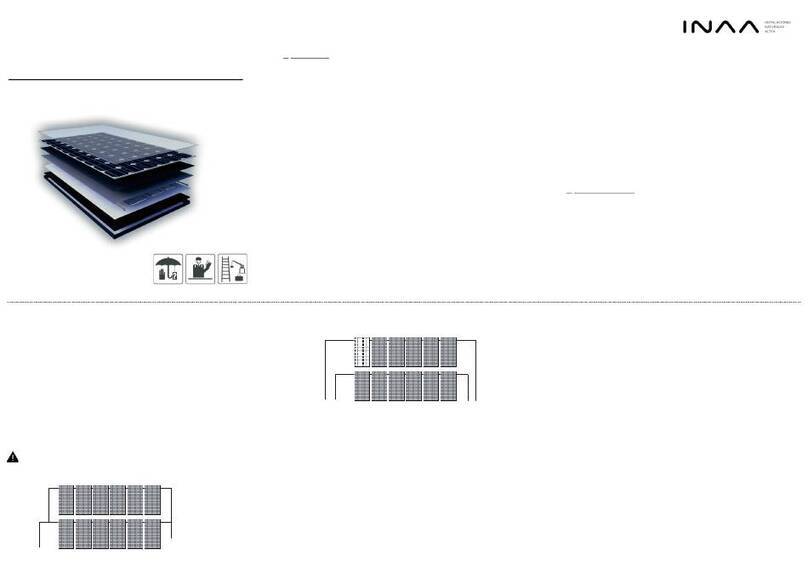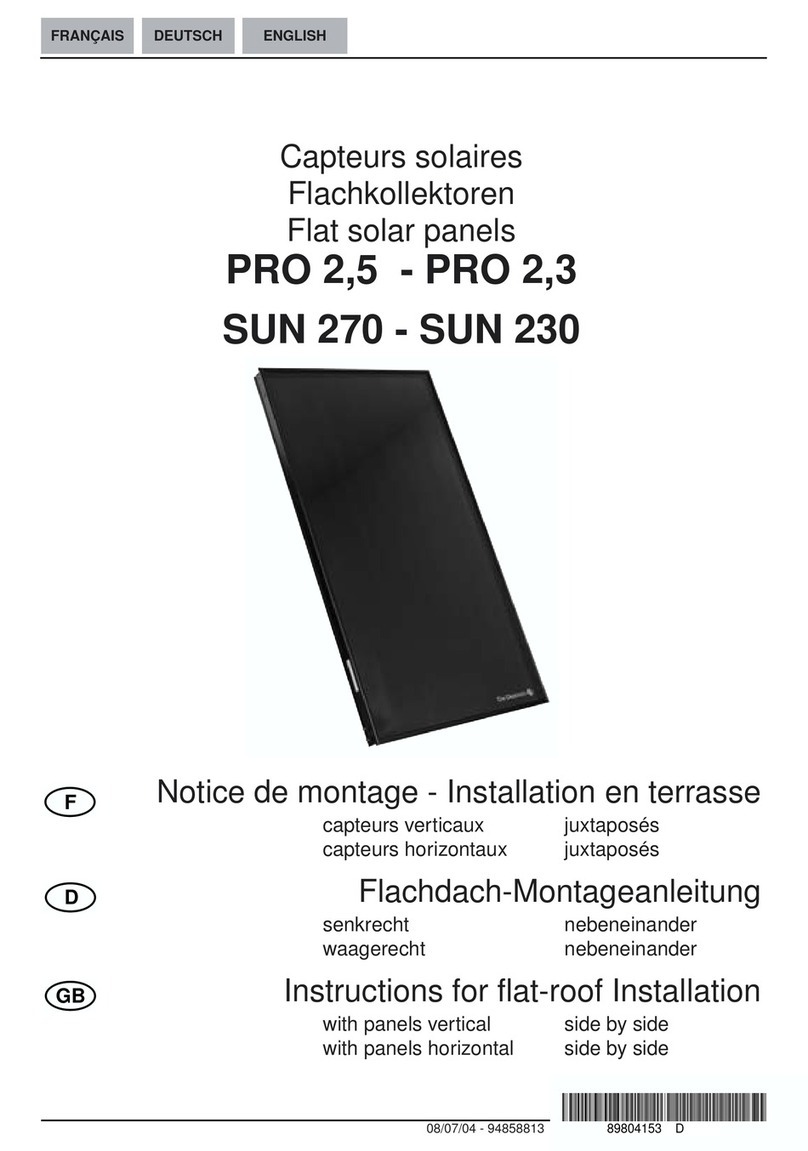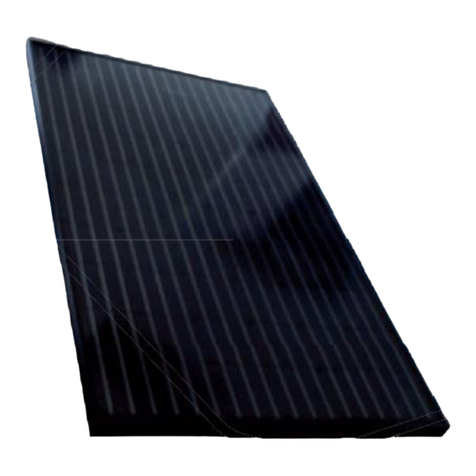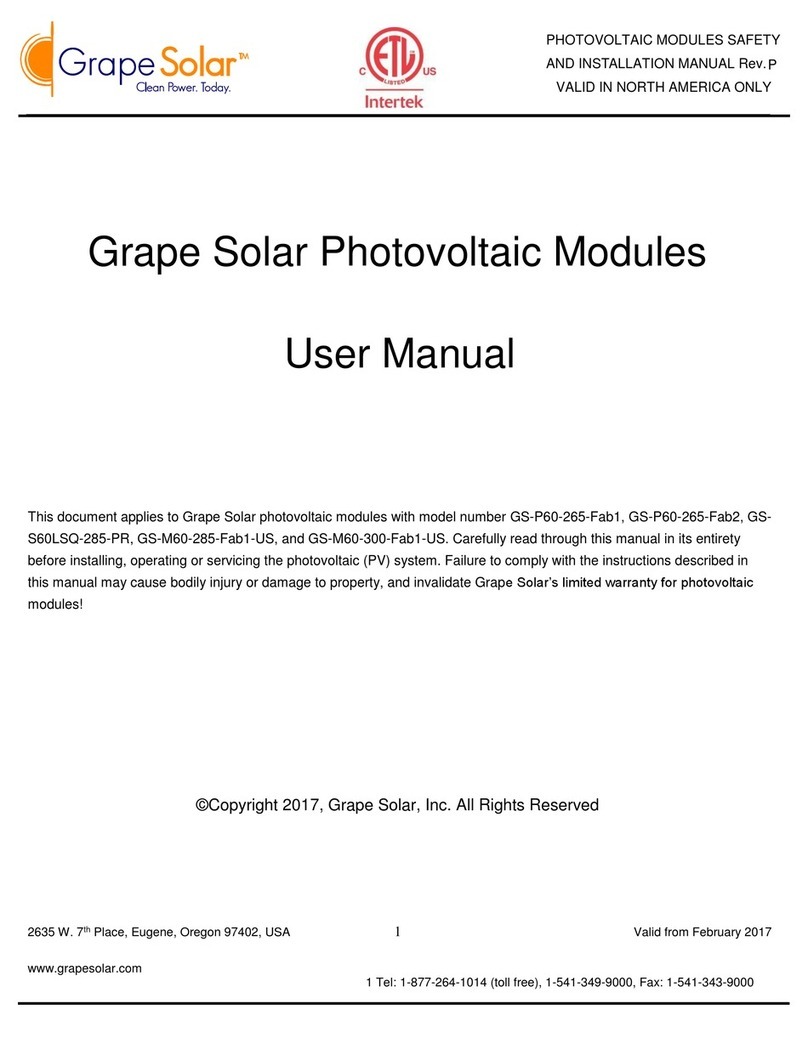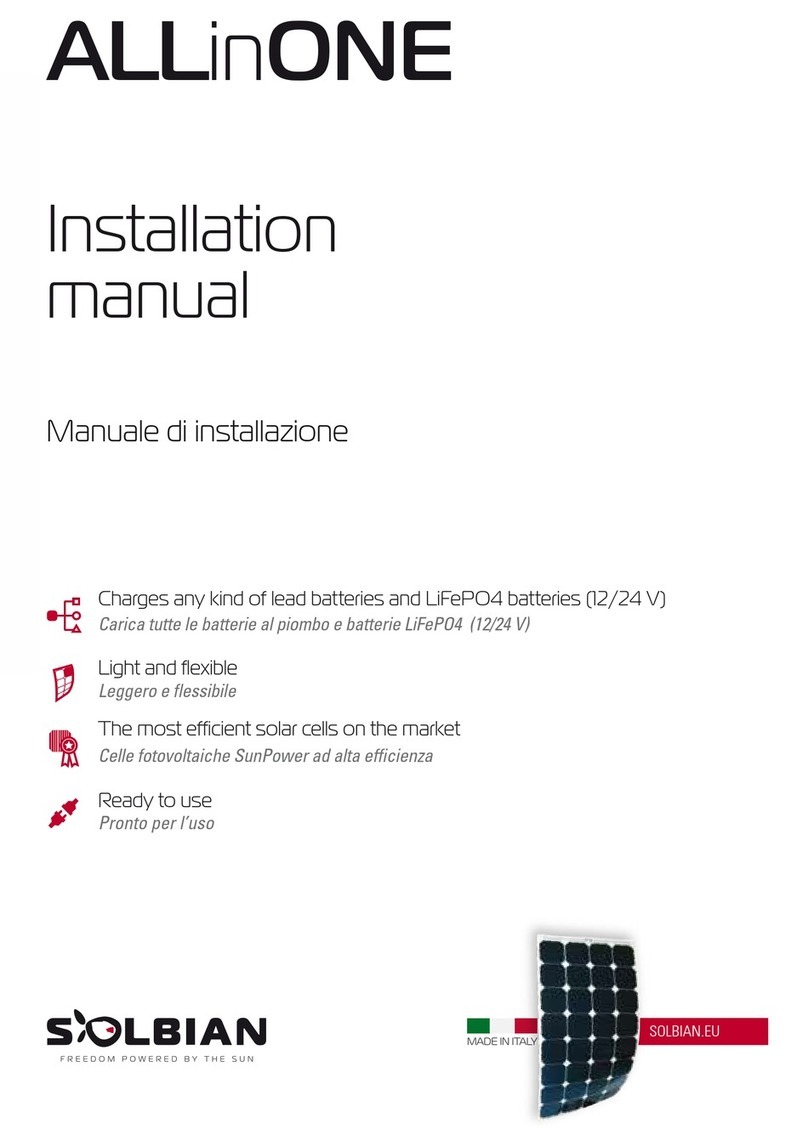Nobel Apollon Meander AL GRD MDR User manual

Technical Manual
Installation, maintenance & use instructions
Solar collectors
Meander AL GRD MDR


3
Solar Collectors - APOLLON
Apollon Μeander AL GRD MDR
APOLLON MEANDER AL GRD MDR
CONTENTS
GENERAL INFORMATION...................................................................................................................................... 4
DOMESTIC HOT WATER CONSUMPTION............................................................................................................ 4
SOLAR WATER HEATER OPERATION - WATER HEATING ................................................................................. 4
COLLECTOR SPECIFICATIONS ............................................................................................................................ 5
PACKAGING ........................................................................................................................................................... 6
TRANSPORTATION AND HANDLING INSTRUCTIONS ........................................................................................ 6
LABELING............................................................................................................................................................... 7
INSTRUCTIONS FOR THE INTERCONNECTION OF COLLECTORS IN SOLAR FIELDS .................................. 7
RECOMMENDATIONS ON HEAT TRANSFER MEANS AND SAFETY AND PROTECTION MEASURES
DURING FILLING, OPERATION AND MAINTENANCE OF THE SYSTEM ........................................................... 7
MAXIMUM OPERATING PRESSURE, PRESSURE DROP, MAXIMUM AND MINIMUM ANGLE.......................... 8
GENERAL INSTALLATION RULES ........................................................................................................................ 9
INSTALLATION POSITION ................................................................................................................................... 10
GENERAL PREVENTION MEASURES................................................................................................................ 11
SUPPORT BASE PARTS ...................................................................................................................................... 12
SUPPORT BASE ASSEMBLY ON A FLAT SURFACE .......................................................................................... 13
SUPPORT BASE ASSEMBLY ON AN INCLINED SURFACE............................................................................... 15
POST INSTALLATION INSTRUCTIONS............................................................................................................... 17
CHECK LIST ......................................................................................................................................................... 18

4Solar Collectors - APOLLON
GENERAL INFORMATION
In the present manual you will nd all necessary instructions with regard to the installation, operation and
maintenance of the product.
The company is active in the Solar Energy with high-tech equipment, ultra-modern facilities and certied products
of high quality. Our experience and know-how support our co operations, before and after sales, both in Europe and
internationally. Nowadays, the necessity for production and saving of energy without at the same time polluting the
environment has become common knowledge. The planetʼs conventional energy resources are diminishing to a
threatening level as our societyʼs energy requirements are increasing, generating pollutants that affect the climateʼs
balance. Renewable energy sources promise a solution to the energy problem as well as to pollution. Gradually, the
international legislation is changing and encouraging - or even imposing - the use of alternative energy products, with
the aim to satisfy energy requirements without endangering the environment.
DOMESTIC HOT WATER CONSUMPTION
Statistically, it is estimated that the mean family consumption is 35 to 50 litres daily per person. If we add the
consumption of a washing machine and a dishwasher, when these are connected to the solar water storage tank, then
each requires 20 litres per day (per wash). Thus, a family of four, for example, with a mean hot water consumption
of 40 litres per person, needs an 160 litres solar water heater. If household appliances connected to the solar water
heater are added, then the demand increases by at least 40 litres daily. In order to take full advantage of the solar
water heater, maximum use of hot water should be made during daytime, so that the system can continuously
produce hot water during the daylight hours, maintaining thus its maximum efciency.
SOLAR WATER HEATING
The collecting surface absorbs solar energy and heats the liquid (water or antifreeze mixture) that circulates in
the water element. The factors that affect the temperature of the water supplied by a solar system are many and
their values vary according to the season, the time of day and the location. Keeping in mind that the solar system
is a system that is exposed to the weather conditions, basic parameters affecting its performance are the mains
water temperature, the available solar energy and the ambient temperature. The mains water does not have a
constant temperature throughout the year, being much colder in winter compared to summer. Considering 45°C as
a satisfactory temperature for the domestic hot water (in order to full the needs of a home) and based on statistic
values, in winter the temperature of the mains water has to be increased by approximately 35°C, whereas during the
summer the increase is 20°C.
Similarly, the available solar energy does not remain the same throughout the year, being much less in the winter
months than in the summer months. During periods of reduced sunlight and low ambient temperatures, the solar
water storage tank assures the preheating of the water and can be assisted by an optional electrical heating element.
As far as night-time temperature losses are concerned, these are limited as much as possible by the solar system’s
powerful thermal insulation. They are nevertheless affected by ambient temperatures, which vary depending on the
location and the weather.

5
Solar Collectors - APOLLON
Apollon Μeander AL GRD MDR
APOLLON MEANDER AL GRD MDR
1. External one piece aluminium trough of high aesthetics, shaped by deep drawing method in 400 tn capacity
press, made of naval aluminium alloy, rich in magnesium. Robust construction for perfect tightness.
2. High density, eco-friendly thermal insulation achieved with a 60mm thick layer of prepressed rockwool with
a covering of black glass fabric for the minimization of thermal losses.
Rockwool insulation thermal conductivity: λ=0.035 W/m grd (DIN 56612, measured at 0°C)
3. Water frame of copper pipe of suitable gauge and thickness (headers: Ø22, manifold: Ø10) Headers are
punched with upper expansion, for perfect manifold tting, thus avoiding pressure drop in the collectors.
4. Selective complete area absorber made of selective aluminium sheet with a special titan coating formed in
vacuum,of high absorbency and low radiation, covers the complete window area as well as the headers, thus
increasing the collector’s absorbency, Laser Welded to the water frame.
5. Special plastic parts for supporting and sealing the water frame to the trough, specially designed for the
collector’s ventilation, with sensor supporting option.
Special silicone rubber seals allow uctuation of the absorber’s length (contraction - expansion) in a -40°C
to +200°C temperature range.
6. Tempered solar glass low iron, with a stable coefcient of expansion and high light transmittance, can withstand
adverse weather conditions (e.g. hail storm, extreme temperature changes, etc.).
7. Solar glass rubber seal: UV proofed
8. Alluminium prole electrostatically painted (Al Mg Si 05): for solar glass seating and supporting.
Solar Keymark
Certied collectors
COLLECTORS SPECIFICATIONS
TECHNICAL DATA APOLLON MEANDER AL GRD MDR
TOTAL AREA (m²) 2.03
NUMBER OF MANIFOLDS 1
HEAT TRANSFER MEDIUM PROPYLENE GLYCOL SOLUTION
CAPACITY (lt) 1.70
ABSORBER SURFACE (m2) 1.81
TOTAL DIMENSIONS LxHxW (mm) 2010x1010x110
COLLECTOR TOTAL WEIGHT (without liquid) (kg) 32.3
ABSORBER SELECTIVE ALUMINIUM
ABSORBENCY COEFFICIENT 95% ±2%
RADIATION COEFFICIENT 5% ±2%

6Solar Collectors - APOLLON
PACKAGING
The collector is packed in a carton box. All the parts of the support base system are packed in a carton box, if the
installation needs so demand.
TRANSPORTATION AND HANDLING INSTRUCTIONS
Caution: the supporting base must be assembled before the installation of the collector.
The collector is packed in a cardboard box. During its transport and handling, all safety indications on the packaging
should be respected. The packing materials must be removed from the collectors at the point of installation, so as
to protect them from shocks, paying attention not to support the collectors on their pipe connections. When the
packaging materials are removed the collectors must be placed directly onto their supporting base, which must be
assembled according to the instructions in this leaet.
FLAT SURFACE INCLINED SURFACE
One type of supporting base
system, electrostatically painted,
made of 2.5mm thick galvanised
steel, with stainless steel screws
and nuts for installation on at
or inclined surfaces
SUPPORT BASE
Normal absorber design with louvers.
Air turbulence increases heat loss
Complete area technology
The uniform area prevents heat loss

7
Solar Collectors - APOLLON
Apollon Μeander AL GRD MDR
APOLLON MEANDER AL GRD MDR
LABELING
The collectors are identied by one sticker. On this sticker all the details of the collector are written. The information
provided on the sticker is important for the future identication of the product.
INSTRUCTIONS FOR THE INTERCONNECTION OF COLLECTORS
IN SOLAR FIELDS
In a central collector bank, the maximum number of collectors, must not be greater than seven-eight (e.g. 14-16m2)
per row. The maximum number of collectors shouldn´t be greater than four-ve per row in case of using a Drain Back
system. The collector banks must be connected in parallel between themselves and at a distance of 90cm (when at
an angle of 25°) to 120 cm (when at an angle of 40°). At the beginning and the end of each line, there must be a valve
and a 3/4” x 1/2” x 3/4” T-piece for the installation of a submersible thermometer. In addition at the end of the last row,
the differential thermostat sensor must be placed in place of the collector’s sensor (Ø8).
RECOMMENDATIONS ON HEAT TRANSFER MEANS AND SAFETY AND
PROTECTION MEASURES DURING FILLING, OPERATION AND MAINTENANCE
OF THE SYSTEM.
For the protection of the collectors’ circuit from frost, a solution of water and propylene glycol is used, which is non-toxic,
at a ratio suitable to provide frost protection down to -10° within the collector at an exterior temperature of -20°. Once
the system has been placed and until the installation is complete the glass panels of the collectors must remain covered,
until the boiler is led with service water, so as to avoid the boiling of the lling liquid or the breakage of the glass.
The system must have the lling liquid replaced or topped up every 2-3 years. The lling must be accomplished with
a suitably diluted liquid. In addition, the circuit needs the provision of a differential thermostat with a sensor for the
protection of the circuit from frost which shall activate the circulation pump when the internal temperature reaches +4°C.
Additionally, under no circumstances must the automatic lling valve be left open, as there is the danger that if the
collector bank has a small leak at some point which is leaking water, the automatic lling valve (if left open) will
continuously top up the system with water and so the ratio of the anti freeze liquid will be altered and the collectors
may break at the rst sign of frost.
Dimensions LxWxH (mm): 2010 x 1010 x 110
Overall area: 2,03 m²
Absorber area: 1,81 m²
Overall collector weight: 36 kg
Volume of heat transfer uid: 1,70 lt
Absorber coating: High selective vacuum coating
Standstill temperature: XXX °C
Max. operating pressure: 0,8 MPa (8 bar)
Transparent cover: Tempered, low-iron solar glass
S/N: XXXXXX
Date: ΧΧ / ΧΧΧX
MADE IN EU
Flat meander solar collector AL GRD MDR

8Solar Collectors - APOLLON
MAXIMUM OPERATING PRESSURE, PRESSURE DROP,
MAXIMUM AND MINIMUM ANGLE
The maximum operating pressure - taking into account the increase in pressure due to the water’s expansion - must
not exceed 400 kPa. The ideal water ow in a central system is 40 lt/m2h to 70 lt/m2h and the pressure drop per meter
of installed pipe (supply and return to the collectors) is 30mm of water. This is the data that is used for calculating the
dimensions of the circulation pump in each installation.
NOTE: To the pressure drop of 30mm of water per meter of installed pipe one must add 10mm of water per square
meter of installed collector.
Abasic factor in the optimum performance of the system is the correct selection of angle and orientation, in relation
to the installation site and the period during which we want the maximum yield. The solar system must be oriented so
that the collecting surface faces the geographical south for the northern hemisphere (and the geographical north for
the southern hemisphere), i.e. it should always face the equator. Any deviation in the orientation means a drop in the
system’s performance. If a deviation from the correct orientation cannot be avoided, then the system’s performance
must be corrected by increasing the collector surface, after study and evaluation of the particular circumstances. As
the solar radiation’s angle of attack changes over time and in relation to the system’s installation site, the collector’s
angle shall have to be equal to the site’s latitude ±5°. At this angle the maximum yield is achieved on an annual
basis. The system must not be shaded by trees, buildings or other obstacles so as to ensure 4 hours of unimpeded
exposure of the collector area during the midday hours.
MEANDER AL GRD MDR
Mass owrate [lt/h]
Pressure drop [Pa]
800
700
600
500
400
300
200
100
0
0 50 100 150 250200 300

9
Solar Collectors - APOLLON
Apollon Μeander AL GRD MDR
APOLLON MEANDER AL GRD MDR
GENERAL INSTALLATION RULES
ATTENTION: Installation must be in compliance with local & national rules concerning water and electrical
installations (plumbing, electricity, hygiene, urban and others).
The solar system’s packaging must be removed at the site of installation in order to protect the device from shocks
during its transportation, making sure that the collectors are not supported on their pipe joints. Until installation is
completed, the collector’s glass must remain covered until the water storage tank is lled with domestic water, so as
to avoid the boiling of the lling liquid or the breaking of the glass. The plastic protective caps must be removed from
the collectors’ pipe joints.
Installation location - shading: Prior to installation, a proper selection of the location must be made by the installer
(in agreement with the customer), and the surface must be checked (taking into account the statics assessment), so
that it can bear the weight of the system.
On inclined roofs the system should not be placed between two beams but above a single one.
The position chosen for the collector installation should not be shaded by any obstacles such as trees, buildings and
other all year round, so as to ensure at least 4 hours of uninhibited exposure of the collector to the sun during the
midday hours.
Any deviation means a reduction in the system’s performance. If a deviation from the proper orientation cannot
be avoided, then the system’s performance should be corrected by increasing the collector surface, following a
study and evaluation of the specic conditions that apply. As the sun ray’s angle of attack varies with time but also
depending on the system’s location, the collector’s angle should be approximately equal to the installation location’s
latitude. At this angle the maximum energy gain on an annual basis is achieved.
Installation particularities: In case there is no compatibility between the surface where the collector will be installed
(inclined or at) and the standard equipment provided with the system, a different kind of equipment should be used.
The responsibility for the equipment chosen lies on the installer and in no case on the company. It is up to the installer
to propose & install the different equipment required, who must previously agree it with the customer.
Special weather conditions: In regions suffering from heavy snowfalls, please make sure that the snow is always
timely removed. For this case and cases of regions with storms, high wind velocity, rainfall, cyclones, tornadoes, the
system must be placed on the roof as rmly as possible and must be tightened with extra metal stripes. In areas
where these conditions occur and hail of more than 20mm in diameter is to be observed, it is recommended that
insurance for the collector is issued.
Orientation - optimum angle: a basic factor for the system’s
optimum performance is the selection of its angle and orientation
for its particular location and the time during which the maximum
gain is required. The solar system should be positioned so that the
collector’s surface faces the geographical south, if the installation
takes place in the Northern Hemisphere (and the geographical north
for the Southern Hemisphere), i.e. it should always face the Equator.
N
SN
S
Northern Hemisphere Southern Hemisphere
L
H
LATITUDE DISTANCE BETWEEN THE OBSTACLE AND THE COLLECTOR (L)
0° - 25° 1.0 x H
26° - 35° 1.5 x H
36° - 45° 2.0 x H
46° - 50° 2.5 x H
> 50° 3.0 x H

10 Solar Collectors - APOLLON
Piping: the routing of the piping and cabling must be agreed upon between the installer and the client, so as to ensure
the proper installation of the solar system in compliance with local rules concerning water and electrical installations.
Make sure that the tubes connecting the storage tank with the collector and the piping to/from the water heater
are insulated in such a way that they can withstand temperatures covering the range of: -30°C to 120°C. Anti-UV
protection must be used for the insulation.
Antifreeze Liquid: The special heat transfer medium used in the closed circuit protects the system from freezing and
from salt accumulation inside the collector tubes. The thermal uid must be well mixed with water in a percentage that
is necessary to protect the system. The responsibility for the appropriate heat transfer medium quantity as well as for
the use of other liquid than the one accompanying the solar water heater lies on the installer and in no case on the
company. The use of water or inappropriate liquid may annul the warranty validity.
After the installation is completed, the area where the work was executed should be clean & tidy. The customer
should ll in the check list provided by the company. The company does not hold any responsibility that may be the
result of an inappropriate installation or incorrect use of components used for the solar water heater installation.
INSTALLATION POSITION
The installation is only allowed on roofs and at surfaces of adequate bearing capacity. Before you proceed with the
installation, make sure that the roof and/or the construction is of adequate bearing capacity in terms of statics, always
according to the expected maximum loads at the installation point. If the installation is in a place with an extremely
big wind and snow load, the system as a whole should be statically checked by a skilled person, e.g a specialized
engineer. In special cases, strengthening or more solid constructions may be required.
APOLLON MEANDER COLLECTOR
INSTALLATION MODE WIND LOAD
[km/h] / [kΝ/m2]
SNOW LOAD
[kΝ/m2]
Inclined surface 151 / 1.5 2.17
Flat surface 151 / 1.5 2.17
The rates listed in the above table relate to the resistance of the collector that has been tested on an inclined surface with an angle support of 15°-75° and on a
at surface with an angle support of 35°. Τhe system may only be installed in locations with lower wind and snow load values than the ones mentioned above.
Space requirements for installation on the roof (TILED ROOF)
For the installation on the roof the following points must be taken care of:
yThe minimum distances from the ends of the roof should be:
- From the sides: distance equal to the width of two tiles
- From the top of the roof: distance equal to three rows of tiles
yThe minimum distance limit of 0.8 m should necessarily be respected, in order for the collectors and the mounting
accessories not to be exposed to winds the power of which increases on the perimetrical edges of the roof.
Space requirements for free standing installation (FLAT ROOF)
The system should be installed at least 1.5 m away from the edges of the roof so as for:
1. The systems to be accessible for maintenance reasons.
2. The systems and the xing system not to be exposed to strong winds which are developed at the ends and
edges of the roof.
3. The snow to be removed.

11
Solar Collectors - APOLLON
Apollon Μeander AL GRD MDR
APOLLON MEANDER AL GRD MDR
GENERAL PREVENTION MEASURES
yPlease respect the instructions related to accidents prevention and the safety rules during the installation of the
solar thermal systems as well as the piping.
yPlease keep the work place clear and free of objects obstructing the execution of works.
yDo not let children, pets and other people to come in contact with the tools or close to the working place. This has
to be respected, especially in case of existing buildings renovation.
yStore the antifreeze liquid in a safe place away from children.
yDuring the execution of maintenance, service or installation modication works, please remove the electrical
devices and tools current collector or protect the electrical devices and electrical tools against unintended
activation.
yUse only the tools intended to be used for this specic solar system. The use of other components or inappropriate
tools can cause accidents.
Requirements related to the personnel
yThe installation of our Solar Thermal systems can only be undertaken by authorized specialized companies and
trained personnel.
yWorks in electrical installations or conductors have to be executed by trained & specialized electro technicians only.
Labour uniforms
yHave protection glasses on, as well as appropriate work uniform, protection shoes, protection helmet and special
long hair net.
yDo not wear baggy clothes or jewelry, as they me be trapped in movable parts.
yIf, despite the use of protection glasses, antifreeze liquid comes in contact with your eyes, wash off your eyes with
plenty of water and with the eyes wide open.
yPlease wear protection helmet during the installation works executed at the level of or above the head.

12 Solar Collectors - APOLLON
SUPPORT BASE PARTS
For 2.0m2 collectors
For 4.0m2 collector (2 x 2.0m2)
0
13
173
213
308
1752
1847
1887
2047
2060
1
0
11,5
38,5
342,5
847,5
1151,5
1178,5
1190
3
0
10
110
815
915
925
4
0
14
754
1978
2018
2048
2060
89
2
0
20
920
940
44
140
295
645
800
896
5
0
15
55
490
925
965
980
6
0
300
1200
1500
42
392
1108
1458
1
3
2
5
0
13
173
213
308
1752
1847
1887
2047
2060
0
11,5
38,5
342,5
847,5
1151,5
1178,5
1190
0
10
110
815
915
925
4
0
14
754
1978
2018
2048
2060
89
0
15
55
490
925
965
980
6

13
Solar Collectors - APOLLON
Apollon Μeander AL GRD MDR
APOLLON MEANDER AL GRD MDR
SUPPORT BASE ASSEMBLY ON A FLAT SURFACE
1. Screw parts 1to part 2,
using the M8 screws and nuts
included in the packaging.
2. Screw vertical part 3
to the above parts
3. Screw diagonal part 4to the above parts
and tighten all screws.
Repeat steps 1, 2 & 3 for the other pairs of
parts.
4. Place parts 6crosswise and tighten
the screws.
5
2
1
3
4
6
5
5. Screw the collector supporting part 5
to the bottom part of the frame and
tighten the screws.
6. Screw the collector supporting part 5
to the top part of the frame without
tightening the screws.

14 Solar Collectors - APOLLON
8. Join the second collector tightening the unions*.
9. Tighten all screws on the base. Properly orientate the base with the collector. Firmly attach the base using 4
inserts and bolts (M8x60).
N
SN
S
Northern Hemisphere Southern Hemisphere
10. Place a T-piece with the air bleed and the sensor slot at the upper left part of the collector. Connect the pipe to
the system’s heat exchanger inlet.
11. Place a 3/4” Ø22 mechanically tightened at the collector bottom right edge. Connect the pipe to the system’s
heat exchanger outlet.
12. Place a Ø22 mechanically tightened copper plugs on the upper right and bottom left edge of the collector/s.
13. Place the intermediate decorative channel (optionally), clasp the piping covers and fasten up the plugs at the
bottom part.
*Use lock nuts in order to avoid the copper tube mechanical strain.
STEP 10
STEP 11
STEP 7
STEP 12
60mm
7. In case of two collectors, rst place the left one at the bottom part 5, lifting the upper part 5. Place the screws and
the collector’s xing washers (4 for each collector) without tightening them. Place mechanically tightened Ø22
unions at the edges of the collector.

15
Solar Collectors - APOLLON
Apollon Μeander AL GRD MDR
APOLLON MEANDER AL GRD MDR
SUPPORT BASE ASSEMBLY ΟΝ ΑΝ INCLINED SURFACE
ATTENTION! After the installation check that the collectors surface has a tilt angle to the horizontal position of
geographical latitude ±5°.
1. Screw part 1to part 2, using the M8 screws and nuts included in the packaging. Repeat for the second pair.
2. Place part 4 between the two Π shape parts constructed in the former step 1 in order for the frame to be formed.
Screw straight parts 6(which will be used for the mounting of the support base to the tiles) to the botton part.
Repeat for the rest of the parts.
5. Bend the straight parts 6of
step 2 with the hand covering
the beams of the tiled roof.
Drill and fasten up with bolts.
Use level so that the base is
horizontally placed.
3. Screw the collector supporting part 5
to the bottom part of the frame and
tighten the screws.
4. Screw the collector supporting part 5
to the top part of the frame without
tightening the screws.
2
1
2
1
1
2
5
5
4
6
4

16 Solar Collectors - APOLLON
6. In case of two collectors, rst place the left one at the bottom part 5, lifting the upper part 5. Place the screws and
the collector’s xing washers (4 for each collector) without tightening them. Place mechanically tightened Ø22
unions at the edges of the collector.
7. Join the second collector and tighten the unions*.
Tighten all screws on the base.
8. Place a T-piece with the air bleed and the sensor slot at the upper left part of the collector. Connect the pipe to
the system’s heat exchanger inlet.
9. Place a 3/4” Ø22 mechanically tightened at the collector bottom right edge for the connection of the boiler line*.
Connect the pipe to the system’s heat exchanger outlet.
10. Place a Ø22 mechanically tightened copper plugs on the upper right and bottom left edge of the collector/s.
11. Place the intermediate decorative channel (optionally), clasp the piping covers and fasten up the plugs at the
bottom part.
*Use lock nuts in order to avoid the copper tube mechanical strain.
60mm
STEP 8
STEP 9
STEP 6
STEP 10

17
Solar Collectors - APOLLON
Apollon Μeander AL GRD MDR
APOLLON MEANDER AL GRD MDR
POST INSTALLATION INSTRUCTIONS
Before using the system make a nal check. Open all the valves and check for any kind of leakage. Repeat the
inspection after 30 minutes. Check if the system is lled with water and antifreeze uid according to the company’s
instructions. In case of any failure condition a specialized technician should be called in.
A basic periodic maintenance will assure the long life and high efciency of the solar installation.
yIt is recommended that the appliance is inspected in situ according to the instructions stated in the guarantee
twice a year and checked for possible damage (breaking) of the collectors’ glass, leaks in the connecting piping to
the mains and to the consumption system, inspection of the pipe insulation and cleaning of the glass.
yIf the collectors’ glass is broken, it should be replaced immediately.
yIt is recommended that the glass is washed at an hour of low sunlight to avoid damages due to expansion-
contraction, due to temperature changes.
y If the ttings are worn (screws, pugs, piping, etc), these should be replaced at the owner’s cost.
yThe level of antifreeze in the closed circuit must be checked annually (as it could need toping up), to ensure the
efcient operation.
yIn cases where there is to be no use of hot water for long periods of time (e.g. during the summer holidays), it is
recommended that the collector surface is covered with an opaque cover in order to avoid the building up of high
temperatures.
ATTENTION! Place taps with thermostatic regulation up to 38°C for hot water use to prevent burns which may be
caused by the high temperature water in the solar installation.

18 Solar Collectors - APOLLON
CHECK LIST
INSTRUCTIONS FOR THE INSTALLER
After the installation is complete, the installer, with the help of the check list below has to check all of the points which
are noted and mark in the relevant column with a √.
LIST CHECK
COLLECTORS AND EXTERNAL PIPING
Is the installation and the xing of the support base according to the instructions and local regulations?
Is there an ideal location and facing of the collectors?
Is there humidity inside the collectors?
Are the hydraulic connections of the collectors correct?
Has there been good UV protection on the thermal insulation?
Is the piping properly insulated?
Has the installment on the roof been done according to the local regulations?
HYDRAULIC CONNECTIONS
Are there any leaks in the closed circuit, the connections, or in the tube heat exchanger ?
Are the safety valves installed properly?
Does a mixing valve of hot / cold water exist?
ELECTRICAL CONNECTION
Is the electric resistance connected properly? (if it exists)
Has the electric connection been done according to the local regulations? (insulation, grounding, etc...)
GENERAL
Was the guarantee properly lled in and given to the client?
Were the instructions of use given to the client?
Was the proper selection of the model made according to the needs of the client?
Was the client informed of other options for the production of hot water?
Distributor Data
Full name.....................................................................
Address........................................................................
Telephone.....................................................................
Installer Data
Full name.....................................................................
Address........................................................................
Telephone.....................................................................


Installation, maintenance &
use instructions
www.nobel.bg
NOBEL INTERNATIONAL EAD
SOLAR WATER HEATING SYSTEMS INDUSTRY
48 Vitosha Blvd., Elin Pelin 2100 - Soa Region, Bulgaria
Tel.: +359 2 4210232 email: info@nobel.bg
11-18
Solar collectors
Meander AL GRD MDR
The company preserves the right to change all specications of the products and their accessories without prior notice
The company preserves the right to change all specications of the products and their accessories without prior notice
Table of contents
Popular Solar Panel manuals by other brands

Viessmann
Viessmann VITOVOLT 200 5458 installation instructions
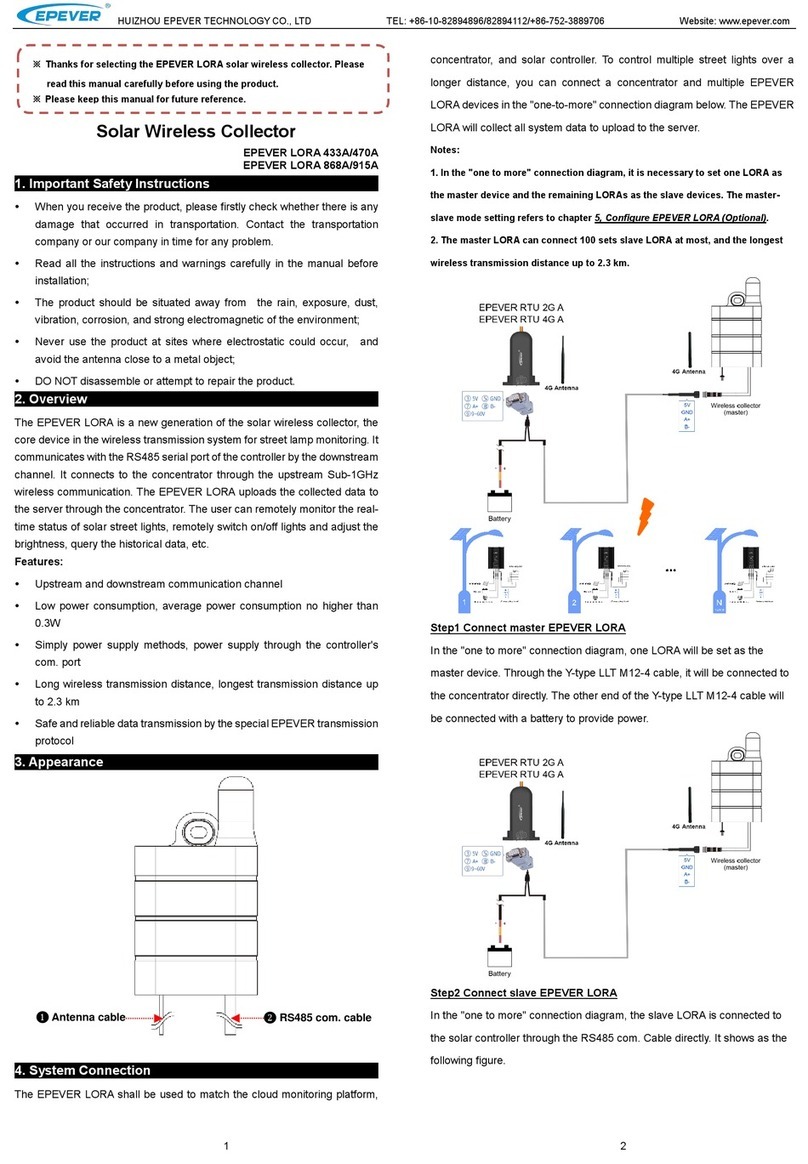
Epever
Epever LORA 433A/470A quick start guide
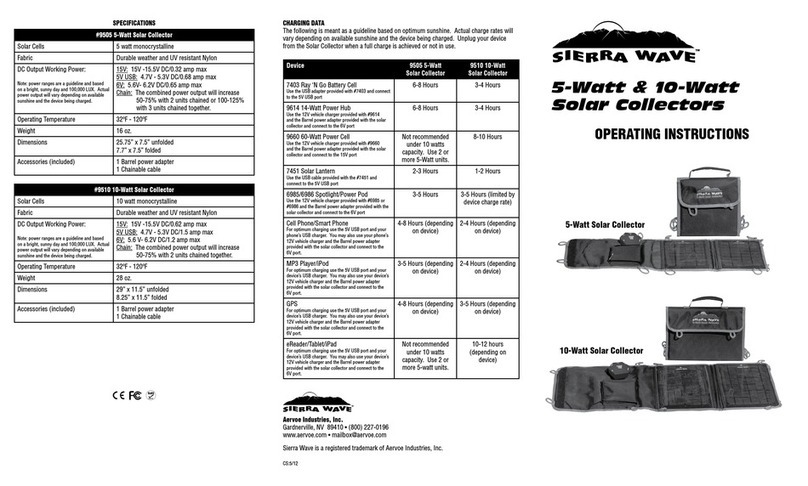
Sierra wave
Sierra wave 5-Watt Solar Collectors operating instructions
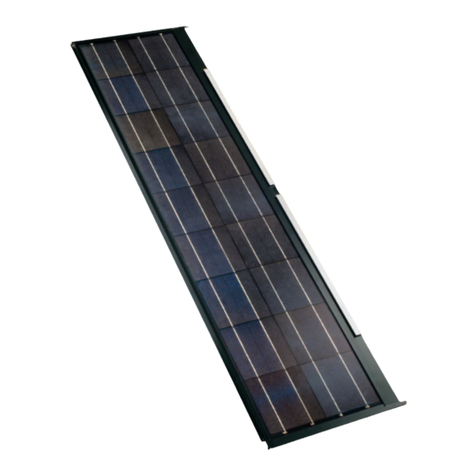
Sharp
Sharp ND-60RU1 Features & benefits

Steinbach
Steinbach speedsolar Series manual

Floe
Floe 511-01354-01 Assembly instructions

Sunna Design
Sunna Design Sol EVERGEN M Series installation guide
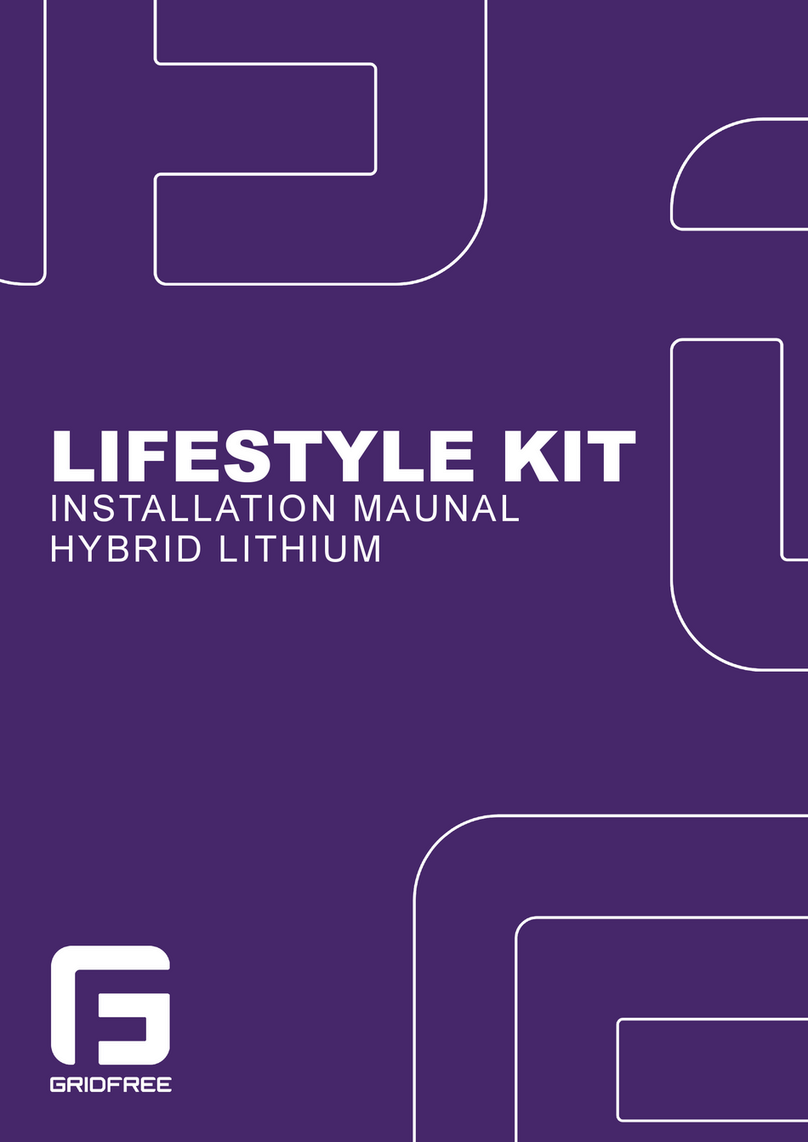
GRIDFREE
GRIDFREE LIFESTYLE KIT installation manual
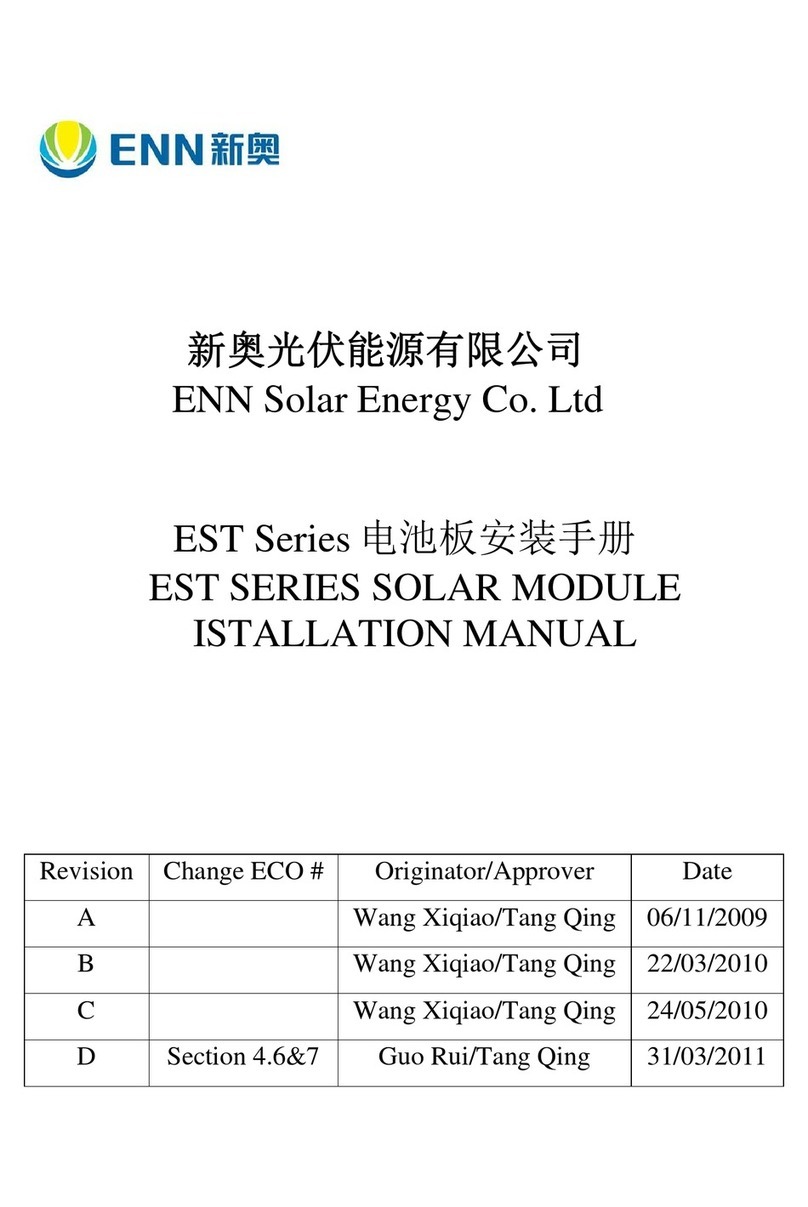
ENN Solar Energy
ENN Solar Energy EST-110 installation manual
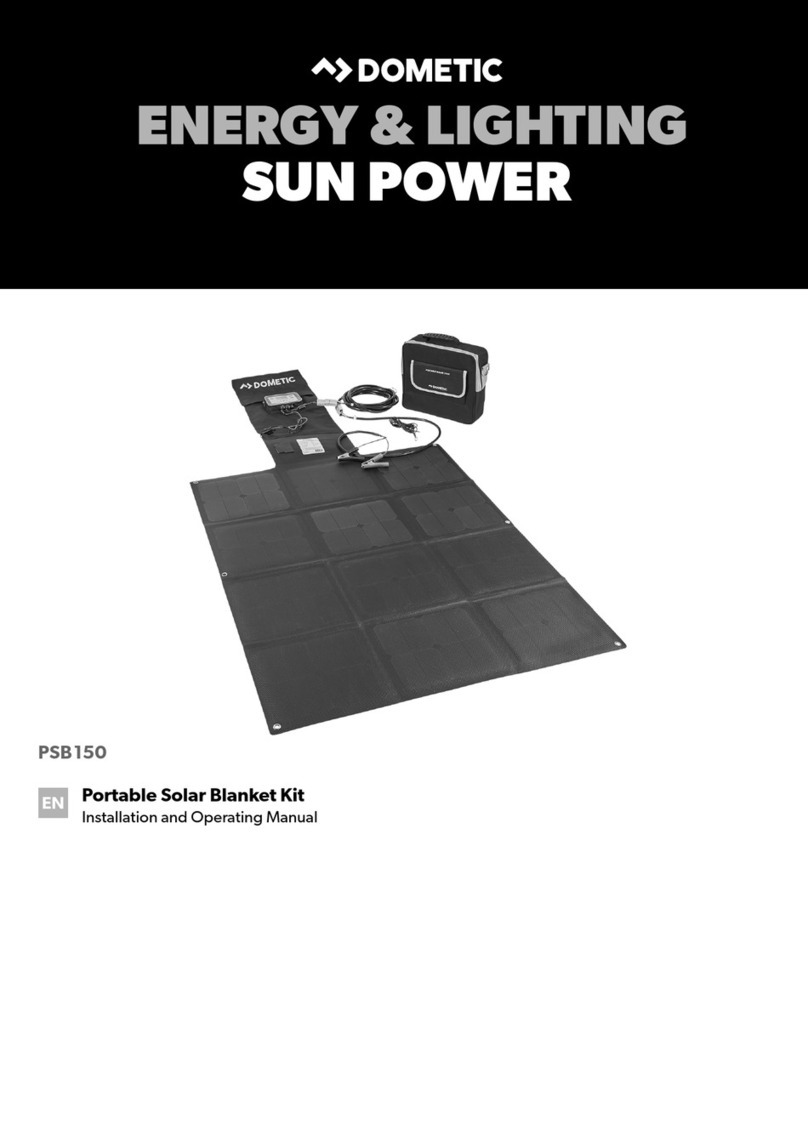
Dometic
Dometic 9600010943 Installation and operating manual

LG
LG LG N1C(W)-E6 Series installation manual

Hanwha Solar
Hanwha Solar HSL60P6-PB-1-xxx Series installation guide
